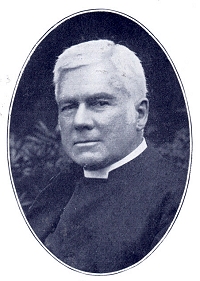Fannie was a believer who evidently felt some anguish at her
condition. That much may be surmised from what Fannie Estelle Church Davison
decided to express in a poem she entitled “Purer in Heart, O God” as a 26-year
old in 1877. She was a wife and mother of a little girl, and this young family lived
in the midwestern U.S. She had written other poetry that became songs, but this
one was among the first ones that she had composed and was published in a
hymnal. Its message must have hit home with others at the time, prompting its
use. Is it possible for the human animal to be made pure through some complex
machinations, like dirty water being made potable by going through some device
(with the help of this antique manual control chlorinator for the liquefaction of chlorine
for water purification, shown here)? Fannie’s song endures, communicating something
pretty important for us believers over 100 years later that still identify with
its sentiments – a plea from Fannie to the Holy God for help.
We know a limited amount of information on Mrs. Fannie Davison,
yet it fills in some details and gives us a little window into her
circumstances. She’s credited with writing some 95 texts by the end of her
all-too-brief life, which ended in 1887, just 10 years after “Purer in Heart…”
was published. Her demise at age 36 was perhaps due to a long-term illness
(according to another blogger), but was she in fact pondering how brief earthly
existence might be even in her mid-20s? What in fact motivated the desire of this
young wife and mother of a six-year old to be more pure? She’d lost her
biological father at the age of 10 (death’s cause unknown), and experienced the
U.S. Civil War’s visit upon probably many people she knew up until her
mid-teens, so she knew life could be short. It must have struck her that time
might not allow her to work out over a natural lifetime how to become more wholesome,
more acceptable to God. Her family may have been in the Chicago area, or
perhaps in Wisconsin as she mulled over a closer devotion to her Creator. Had
she met others in either of those places that spurred this self-reflection? Perhaps
it was her own family’s inspiration—the ones that gave her the middle name ‘Church’--
that motivated the consideration of her spiritual condition. Since Fannie kept
writing songs that were published in two additional collections in 1880 and 1882,
we may suspect she continued to work on herself, or that maybe she was helping to
articulate the feelings of others she knew through her compositions. No
specificity is required, for she voiced what is common for any rational,
heaven-seeking individual. How do I approach Him, if I’m still dirty?
Fannie’s own verses suggest how she might have answered the
question the unclean poses when looking vertically. A: Don’t try to hide from
what the Omniscient already sees, but invite Him to observe (‘Watch thou my
wayward…’ v.1), and trust that He wants
to help; B: Be moldable (‘Teach me…v.2)…this Creator knows what He’s doing, as
He keeps creating me; and C: Know that I only lose sight of Him if I let
something (‘secret sin’, v.3) get wedged in between us. Is it significant that
Fannie began and ended each of her verses with the same petition – help me be
pure? There must have been times she despaired that hers was a hopeless quest.
At the same time, He doesn’t stop His quest for me, either. Maybe He just wants
to hear me keep asking.
See link here for song’s verses:
Brief biography of composer here: http://www.hymntime.com/tch/bio/d/a/v/davison_fec.htm
Another blogger’s information on the composer is here: https://hymnstudiesblog.wordpress.com/2009/12/07/quotpurer-in-heart-o-godquot/




